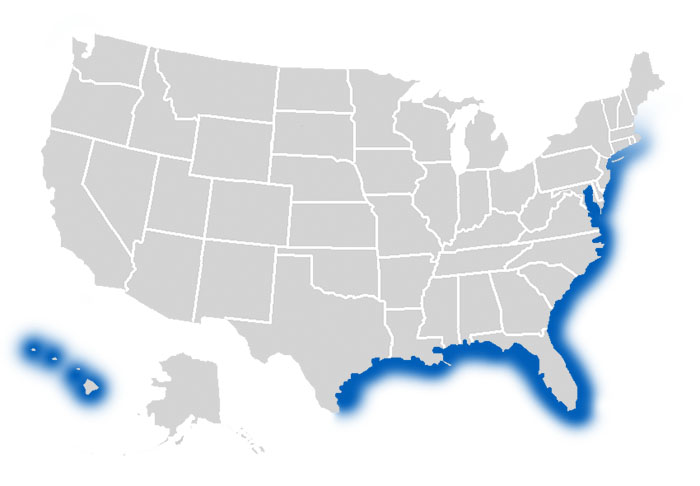Silky sharks are considered to be a threatened species that lives in the Atlantic, Pacific and Indian Oceans. They can be caught by chumming, still fishing, trolling, and bait casting. These sharks are usually caught accidentally or returned to the ocean after they are removed from the hook.

Habitat: Ocean
How to identify Silky Shark
Silky sharks get their name because of their silky-looking skin. They have a short dorsal fin, long pectoral fins, and long, slender bodies. Silky sharks are easily identified by the long, free tip on their second dorsal fin. This tip is twice as long as the fin is high. They also have a free tip on their first dorsal fin. Their first dorsal is round and begins where the free tip on their pectoral fins ends.
Where to catch Silky Shark
These sharks are commonly found in the Atlantic, Pacific, and Indian Ocean’s epipelagic zone. They are present in the western Atlantic from Brazil up to Massachusetts, which includes the Caribbean and the Gulf of Mexico. In the east Atlantic, they are present from Angola to Spain. They inhabit the Red Sea from Mozambique to Tanzania, the Comores, and Madagascar. From the middle to the eastern Indian Ocean, they are present from western Australia to Sri Lanka and the Maldives. Over in the west, east and southwestern Pacific, they are present from Peru to Baja California, Hawaii, and from New Zealand to China.

While the silky shark is a pelagic species found in depths of 50 to 1500 feet. It prefers warmer waters (23°C) and is commonly found over deepwater reefs and continental shevles where it has an abundant food source. Silky sharts are known to follow schools of tuna.
The following are habitats where you can catch Silky Shark:
How to catch Silky Shark
The silky sharky is valued by commercial fisherman for its fins. In fact, they have been hunted so much, that they are now considered near threatened. These sharks aren’t generally targeted by recreational fisherman, and those who do catch them are encouraged to return them to the ocean once they are caught. A good method for catching them is to start by chumming, then use a longline with whole bait. Other effective methods include trolling and bait casting.
The following are effective fishing methods and techniques for catching Silky Shark:
Best Lures, Bait & Tackle to catch Silky Shark
These sharks respond best to whole bait, including bluefish and mackerel.
The following are fishing lures, bait and tackle that can be used to catch Silky Shark:



